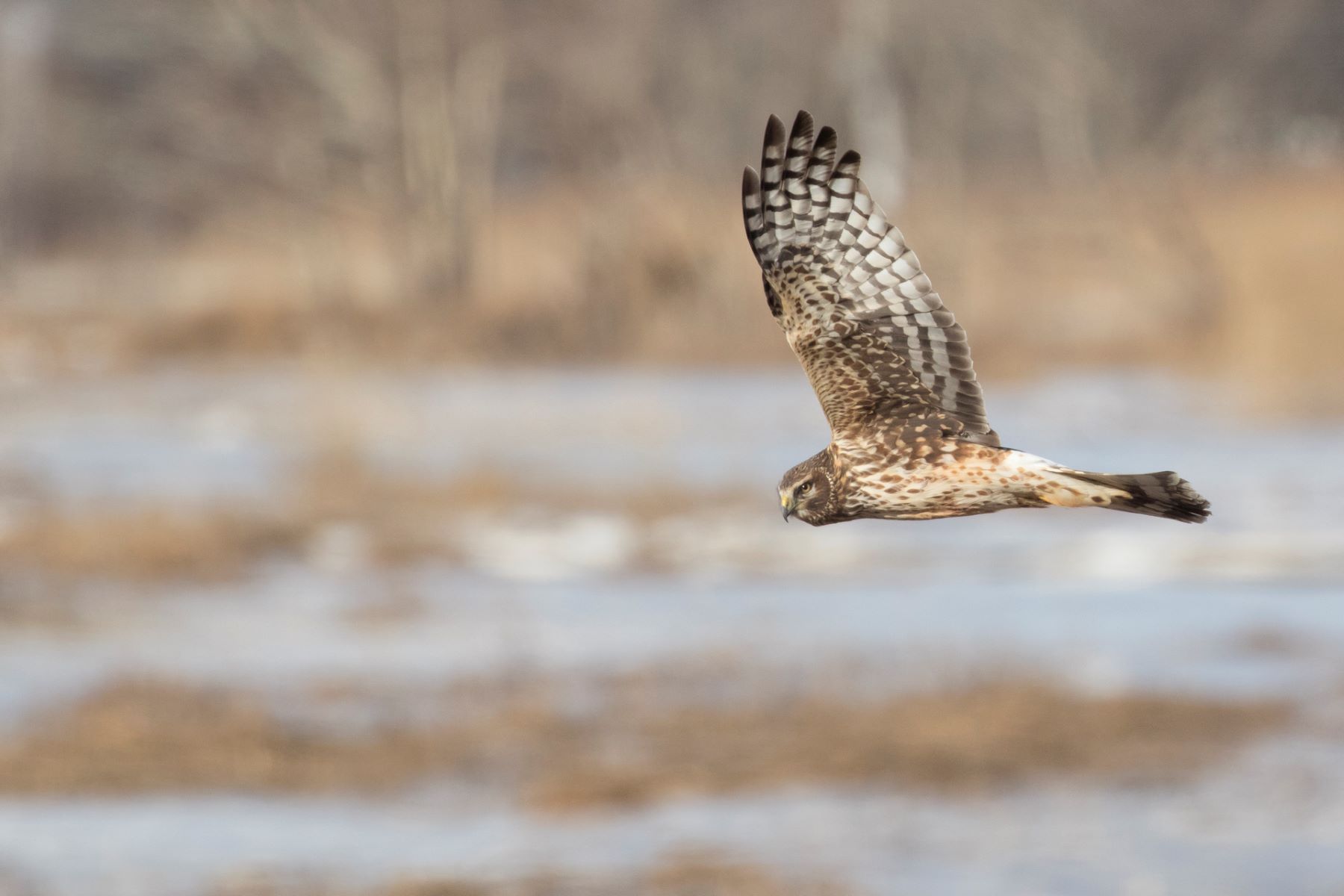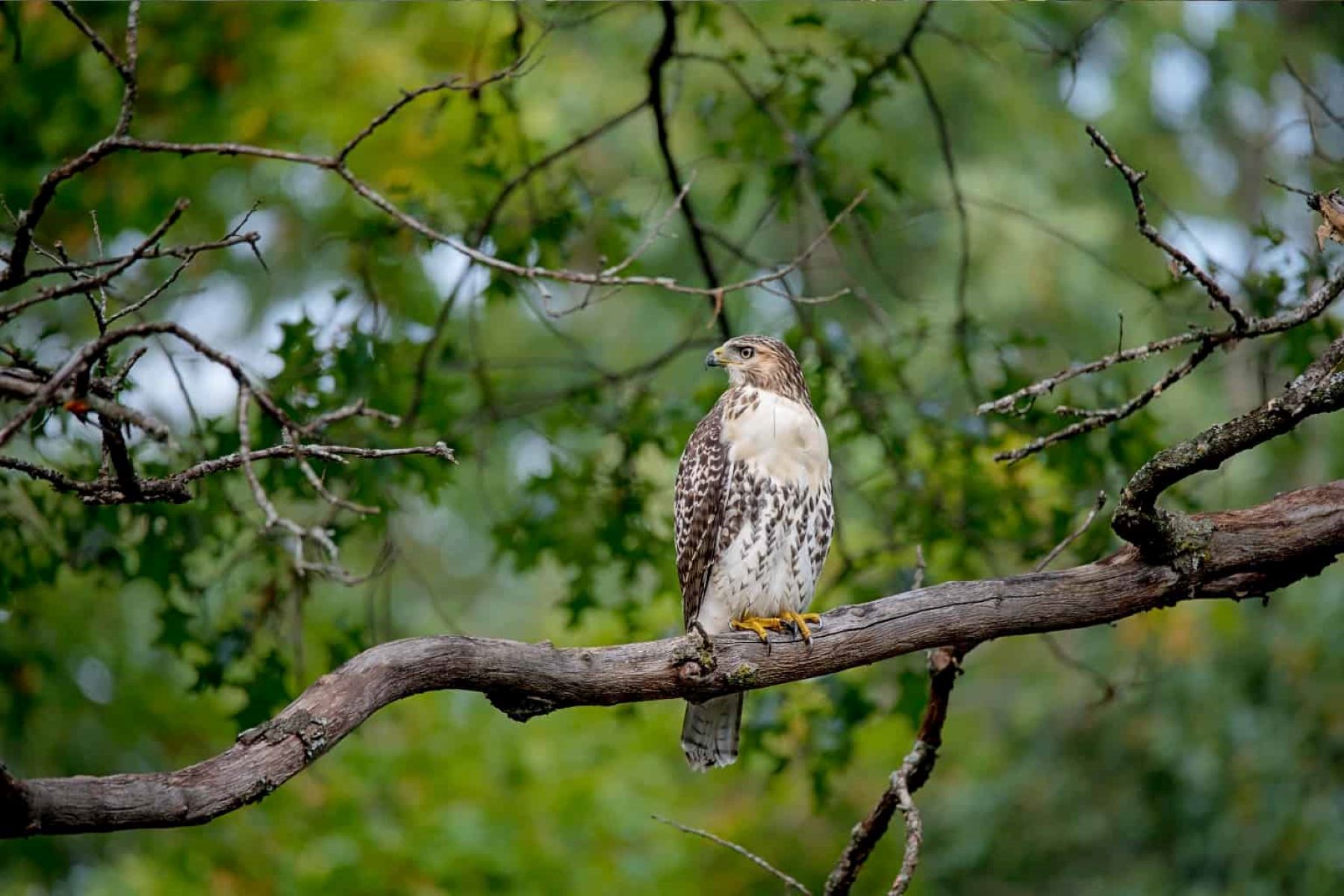Home>Pets & Animals>The Ultimate Guide To Differentiating Owls, Eagles, Falcons, Hawks, And Vultures


Pets & Animals
The Ultimate Guide To Differentiating Owls, Eagles, Falcons, Hawks, And Vultures
Published: February 17, 2024
Learn how to differentiate owls, eagles, falcons, hawks, and vultures with our comprehensive guide. Discover unique traits and characteristics. Perfect for pet and animal enthusiasts!
(Many of the links in this article redirect to a specific reviewed product. Your purchase of these products through affiliate links helps to generate commission for Regretless.com, at no extra cost. Learn more)
Table of Contents
Introduction
Birds of prey, also known as raptors, are a fascinating and diverse group of birds that capture the imagination with their majestic flight and predatory prowess. These formidable hunters play a crucial role in maintaining ecological balance and are revered for their keen eyesight, powerful talons, and remarkable aerial agility. Among the most iconic raptors are owls, eagles, falcons, hawks, and vultures, each with distinct characteristics and behaviors that set them apart.
As we delve into the world of raptors, it becomes evident that these birds exhibit a wide range of adaptations that enable them to thrive in various habitats and ecological niches. From the silent, nocturnal hunters such as owls to the soaring, daylight hunters like eagles, each species has evolved unique traits that make them formidable predators in their respective environments.
In this comprehensive guide, we will embark on a journey to unravel the distinguishing features and behaviors of owls, eagles, falcons, hawks, and vultures. By understanding the nuances of each species, we can gain a deeper appreciation for their vital role in the natural world and the conservation efforts necessary to ensure their continued existence.
Join us as we explore the awe-inspiring world of raptors, delving into their physical characteristics, hunting and feeding behaviors, nesting and breeding habits, and the conservation status of these magnificent birds. Through this exploration, we aim to foster a greater understanding of and admiration for these remarkable creatures, shedding light on their significance in the intricate tapestry of the natural world.
Understanding Raptors
Raptors, also known as birds of prey, encompass a diverse group of birds characterized by their formidable hunting abilities and distinctive physical features. These avian predators are renowned for their keen vision, powerful talons, and hooked beaks, all of which are finely tuned for capturing and consuming prey. While the term "raptor" often conjures images of soaring eagles and stealthy owls, it actually encompasses a broader spectrum of birds, including falcons, hawks, and vultures.
One of the defining traits of raptors is their predatory nature, as they are adept at capturing live prey to sustain themselves. These birds play a vital role in maintaining the delicate balance of ecosystems, as they help control populations of various prey species. Their hunting techniques and behaviors vary widely, reflecting the diverse environments in which they reside.
Raptors are known for their exceptional aerial abilities, utilizing swift and precise movements to pursue, capture, and dispatch their prey. Whether soaring high above the landscape or executing rapid dives to seize unsuspecting prey, these birds exhibit remarkable agility and predatory prowess. Their mastery of flight is a testament to their specialized adaptations for hunting and survival.
Each species of raptor possesses unique characteristics that distinguish it from others within the group. For instance, owls are renowned for their silent flight and nocturnal hunting habits, while eagles are celebrated for their majestic aerial displays and powerful talons. Falcons are recognized for their incredible speed and agility, often engaging in high-speed pursuits of avian prey, and hawks are known for their broad wings and keen eyesight, which aids in spotting prey from great distances. Vultures, on the other hand, are scavengers, playing a crucial role in cleaning up carrion and preventing the spread of disease.
In addition to their physical and behavioral distinctions, raptors are deeply intertwined with human culture and folklore, often symbolizing strength, freedom, and wisdom in various societies. Their commanding presence and predatory prowess have captivated the human imagination for centuries, leading to their portrayal in myths, legends, and art forms across different cultures.
Understanding raptors entails delving into the intricate web of adaptations, behaviors, and ecological roles that define these magnificent birds. By gaining insight into the unique attributes of owls, eagles, falcons, hawks, and vultures, we can cultivate a deeper appreciation for their significance in the natural world and the need to safeguard their habitats and populations for future generations.
Physical Characteristics
Raptors exhibit a diverse array of physical traits that are finely tuned for their predatory lifestyles. From their distinctive beaks and talons to their specialized feathers and keen senses, these birds have evolved remarkable adaptations that enable them to thrive as apex predators in their respective habitats.
Owls
Owls are characterized by their unique facial discs, which help funnel sound to their ears, granting them exceptional hearing abilities. Their large, forward-facing eyes are adapted for low-light vision, allowing them to hunt effectively during the night. Additionally, the leading edges of their flight feathers are serrated, enabling them to fly silently and ambush prey with remarkable stealth.
Eagles
Eagles are renowned for their powerful beaks and talons, which are well-suited for capturing and dispatching prey. Their broad wings and keen eyesight facilitate soaring flight, enabling them to survey expansive territories in search of potential prey. These majestic birds are often associated with strength and grace, embodying the essence of avian royalty.
Falcons
Falcons are distinguished by their sleek, streamlined bodies and long, pointed wings, which enable them to achieve incredible speeds during pursuit flights. Their sharply notched beaks are designed for delivering precise, lethal strikes to their avian prey. Falcons' exceptional aerial agility and swift hunting maneuvers make them formidable hunters in open landscapes.
Hawks
Hawks are characterized by their broad wings and keen eyesight, which allow them to scan the ground for small mammals and other prey. Their powerful talons and hooked beaks are well-suited for capturing and subduing prey, reflecting their prowess as skilled hunters. Hawks' adaptability to various habitats contributes to their widespread distribution across diverse ecosystems.
Vultures
Vultures possess specialized adaptations for scavenging, including bald heads that prevent feathers from becoming soiled while feeding on carrion. Their strong, hooked beaks enable them to tear through tough hides and flesh, while their keen sense of smell helps them locate decaying carcasses from great distances. Vultures play a vital role in ecosystem health by efficiently disposing of carrion and reducing disease transmission.
In essence, the physical characteristics of raptors are intricately linked to their hunting strategies and ecological roles. By examining these attributes, we gain a deeper understanding of the diverse adaptations that have shaped owls, eagles, falcons, hawks, and vultures into the formidable predators they are today.
Hunting and Feeding Behaviors
Raptors exhibit a remarkable array of hunting and feeding behaviors that are finely honed to secure sustenance in their respective environments. These behaviors are a testament to the adaptability and predatory prowess of owls, eagles, falcons, hawks, and vultures, each employing distinct strategies to capture and consume prey.
Owls
Owls are renowned for their nocturnal hunting prowess, relying on their exceptional hearing and low-light vision to locate and ambush prey under the cover of darkness. Their silent flight, facilitated by specialized wing feathers, allows them to approach unsuspecting prey with stealth and precision. Once a target is sighted, owls employ swift and lethal strikes with their talons, swiftly dispatching their prey with remarkable efficiency. Their diet consists of small mammals, birds, and insects, reflecting their adaptability as apex nocturnal predators.
Eagles
Eagles are majestic hunters that employ a combination of soaring flight and keen eyesight to detect and pursue prey. These formidable birds are known for their powerful talons, which they use to capture and subdue a diverse range of prey, including fish, small mammals, and other birds. Their hunting behaviors often involve dramatic aerial displays, as they soar high above the landscape before executing precise dives to seize their quarry. Once a successful capture is made, eagles consume their prey at elevated perches or on the ground, showcasing their dominance as apex predators in their ecosystems.
Falcons
Falcons are celebrated for their incredible speed and agility, attributes that define their hunting behaviors. These avian predators engage in high-speed pursuits of avian prey, utilizing their streamlined bodies and powerful wings to execute swift aerial maneuvers. Falcons are renowned for their ability to stoop, or dive, at astonishing speeds to overtake their prey, showcasing their remarkable aerial prowess. Their diet primarily consists of birds, and their hunting techniques reflect a blend of precision, speed, and lethal strikes that epitomize their role as aerial hunters.
Hawks
Hawks are versatile hunters that employ a combination of soaring flight and perched vigilance to secure their meals. Their keen eyesight allows them to scan the ground for small mammals, reptiles, and other prey, which they capture with their powerful talons. Hawks are known for their patience and stealth, often waiting for opportune moments to launch swift and decisive strikes on unsuspecting prey. Their hunting behaviors vary based on their specific ecological niches, reflecting their adaptability to diverse habitats and prey preferences.
Vultures
Vultures play a crucial role as scavengers, relying on their keen sense of smell to locate decaying carcasses. These remarkable birds exhibit unique feeding behaviors, congregating at carcasses to efficiently consume carrion and prevent the spread of disease. Their bald heads and specialized beaks are adapted for tearing through tough hides and flesh, allowing them to access nutrient-rich tissues. Vultures' scavenging behaviors contribute to ecosystem health by facilitating the rapid decomposition of carrion, underscoring their significance in maintaining ecological balance.
In essence, the hunting and feeding behaviors of raptors exemplify the diverse strategies and adaptations that have evolved to sustain these avian predators in their respective habitats. By delving into these behaviors, we gain a deeper appreciation for the remarkable hunting prowess and ecological significance of owls, eagles, falcons, hawks, and vultures in the natural world.
Nesting and Breeding Habits
Nesting and breeding habits are integral components of the life cycles of raptors, shaping their reproductive strategies and contributing to the perpetuation of their species. These behaviors offer captivating insights into the intricate dynamics of courtship, mate selection, and the rearing of offspring, underscoring the resilience and adaptability of owls, eagles, falcons, hawks, and vultures.
Owls are known for their unique nesting habits, often utilizing existing cavities in trees, abandoned nests of other birds, or even human-made structures as nesting sites. These adaptable birds exhibit diverse courtship displays, with males engaging in elaborate aerial performances and vocalizations to attract potential mates. Once a pair bond is established, the female owl lays a clutch of eggs, which are diligently incubated by both parents. The nestling phase is marked by the attentive care of the parents, who provide food and protection to ensure the survival of their young.
Eagles are renowned for their majestic nests, often constructed atop tall trees or cliffs, showcasing their prowess as skilled builders. These massive nests, known as eyries, serve as the focal point of courtship rituals, with pairs engaging in aerial displays and vocalizations to reinforce their bonds. The female eagle lays eggs, which are incubated by both parents, highlighting their collaborative approach to nesting and rearing offspring. The fledging period is characterized by the nurturing care of the parents, who guide their young through the critical stages of development.
Falcons exhibit nesting behaviors that reflect their adaptability to diverse environments, with some species utilizing natural ledges on cliffs, while others favor urban structures such as skyscrapers and bridges. Courtship rituals often involve aerial pursuits and mutual food exchanges, strengthening the pair bond. The female falcon lays a clutch of eggs, which are diligently tended to by both parents. The fledglings receive intensive care and guidance from their parents, equipping them for independence in their respective habitats.
Hawks demonstrate nesting behaviors that align with their ecological niches, with species such as the red-tailed hawk constructing large stick nests in trees, while others, like the ferruginous hawk, utilize ground nests in open landscapes. Courtship displays involve soaring flights and vocalizations, serving as preludes to the nesting season. The female hawk lays eggs, which are diligently incubated by both parents, reflecting their collaborative approach to reproduction. The fledglings receive parental care and guidance, preparing them for life as proficient hunters in their habitats.
Vultures exhibit unique nesting behaviors, often utilizing secluded locations such as caves, cliffs, or dense vegetation for nesting sites. Courtship rituals involve aerial displays and vocalizations, with pairs reaffirming their bonds through mutual grooming and tactile interactions. The female vulture lays eggs, which are diligently incubated by both parents. The fledgling phase is marked by the attentive care of the parents, who provide nourishment and protection, ensuring the survival of their young.
In essence, the nesting and breeding habits of raptors offer a captivating glimpse into the intricacies of their reproductive strategies and parental care. These behaviors underscore the resilience and adaptability of owls, eagles, falcons, hawks, and vultures, shedding light on the enduring legacy of these remarkable birds in the natural world.
Conservation Status
The conservation status of raptors, encompassing owls, eagles, falcons, hawks, and vultures, is a critical concern in the realm of wildlife preservation. These magnificent birds face a myriad of threats that jeopardize their populations and habitats, underscoring the urgent need for concerted conservation efforts to ensure their continued existence in the wild.
Habitat loss and degradation pose significant challenges to raptors, as human activities such as deforestation, urbanization, and agricultural expansion encroach upon their natural environments. The destruction of nesting sites and foraging grounds diminishes the available resources for these birds, leading to population declines and increased vulnerability to other threats.
Furthermore, raptors are susceptible to secondary poisoning from consuming contaminated prey, such as rodents that have ingested pesticides or other toxic substances. This indirect exposure to harmful chemicals poses a significant risk to their health and reproductive success, contributing to population declines and ecological imbalances.
Illegal wildlife trade and poaching also pose grave threats to raptors, as they are targeted for their feathers, talons, and other body parts, which are sought after for traditional medicine, cultural practices, and ornamental purposes. The exploitation of raptors for commercial gain further exacerbates their vulnerability and undermines conservation efforts aimed at safeguarding these iconic birds.
Collision with man-made structures, such as power lines, wind turbines, and vehicles, presents a pervasive threat to raptors, resulting in injuries and fatalities that impact their populations. The expansion of infrastructure without adequate consideration for avian safety poses a significant risk to the survival of these birds, necessitating proactive measures to mitigate the impacts of human development on raptor populations.
Climate change also poses a complex challenge to raptors, as alterations in temperature patterns, precipitation, and habitat dynamics influence their migratory behaviors, prey availability, and nesting success. These ecological shifts require adaptive responses from raptors, placing additional stress on their populations as they contend with changing environmental conditions.
In response to these pressing conservation challenges, concerted efforts are underway to protect and conserve raptor populations and their habitats. Conservation initiatives encompass habitat restoration, establishment of protected areas, community engagement, and public awareness campaigns to foster appreciation for these remarkable birds and promote their conservation.
Moreover, research and monitoring programs play a pivotal role in understanding the ecological dynamics and population trends of raptors, informing targeted conservation strategies and management practices to mitigate threats and enhance the resilience of these birds in the face of environmental pressures.
By addressing the multifaceted challenges confronting raptors and implementing proactive conservation measures, we can strive to secure the future of these iconic birds and preserve their invaluable contributions to ecosystems and human societies. Through collaborative action and unwavering dedication to raptor conservation, we can uphold the legacy of owls, eagles, falcons, hawks, and vultures, ensuring that they soar majestically in the skies for generations to come.
Conclusion
In conclusion, the world of raptors, encompassing owls, eagles, falcons, hawks, and vultures, offers a captivating tapestry of diversity, adaptability, and ecological significance. These remarkable birds of prey have captured the human imagination for centuries, symbolizing strength, freedom, and wisdom across cultures and civilizations. Through our exploration of their physical characteristics, hunting and feeding behaviors, nesting and breeding habits, and conservation status, we have gained profound insights into the awe-inspiring world of raptors.
From the silent, nocturnal hunters exemplified by owls to the soaring, majestic eagles and the swift, agile falcons, each species of raptor embodies a unique set of adaptations and behaviors finely tuned for survival and success in their respective habitats. Their keen senses, powerful talons, and remarkable aerial abilities underscore their role as apex predators, playing a vital role in maintaining ecological balance and regulating prey populations.
The nesting and breeding habits of raptors offer a glimpse into the intricacies of courtship, mate selection, and parental care, highlighting the resilience and adaptability of these birds in perpetuating their species. From the construction of majestic eyries by eagles to the diverse nesting sites utilized by falcons and the collaborative parental care exhibited by owls and hawks, these behaviors underscore the enduring legacy of raptors in the natural world.
However, the conservation status of raptors presents a sobering reality, as these magnificent birds face a myriad of threats, including habitat loss, secondary poisoning, illegal wildlife trade, collisions with man-made structures, and the impacts of climate change. The urgency of safeguarding raptor populations and their habitats cannot be overstated, necessitating concerted conservation efforts and proactive measures to mitigate these threats and ensure the continued existence of these iconic birds.
As we reflect on the significance of raptors in the intricate tapestry of the natural world, it is incumbent upon us to champion their cause, advocate for their protection, and support initiatives aimed at preserving their habitats and populations. By fostering a deeper understanding of and appreciation for raptors, we can inspire collective action to safeguard their future, ensuring that these majestic birds continue to grace the skies and enrich the ecosystems they inhabit.
In essence, the world of raptors is a testament to the resilience, adaptability, and ecological importance of these remarkable birds, underscoring the need for unwavering dedication to their conservation. Through our collective efforts, we can uphold the legacy of owls, eagles, falcons, hawks, and vultures, ensuring that they soar majestically in the skies for generations to come.












